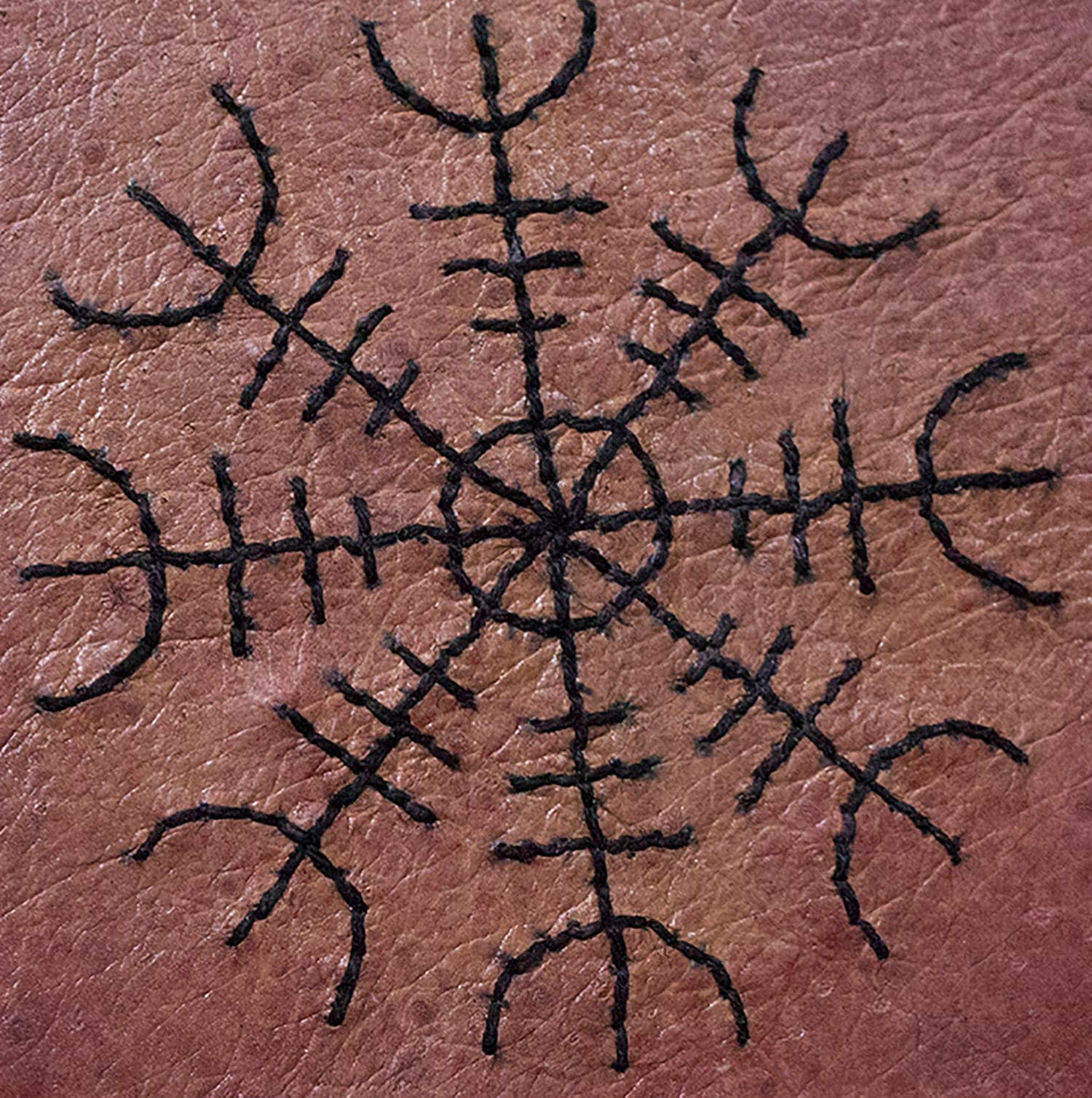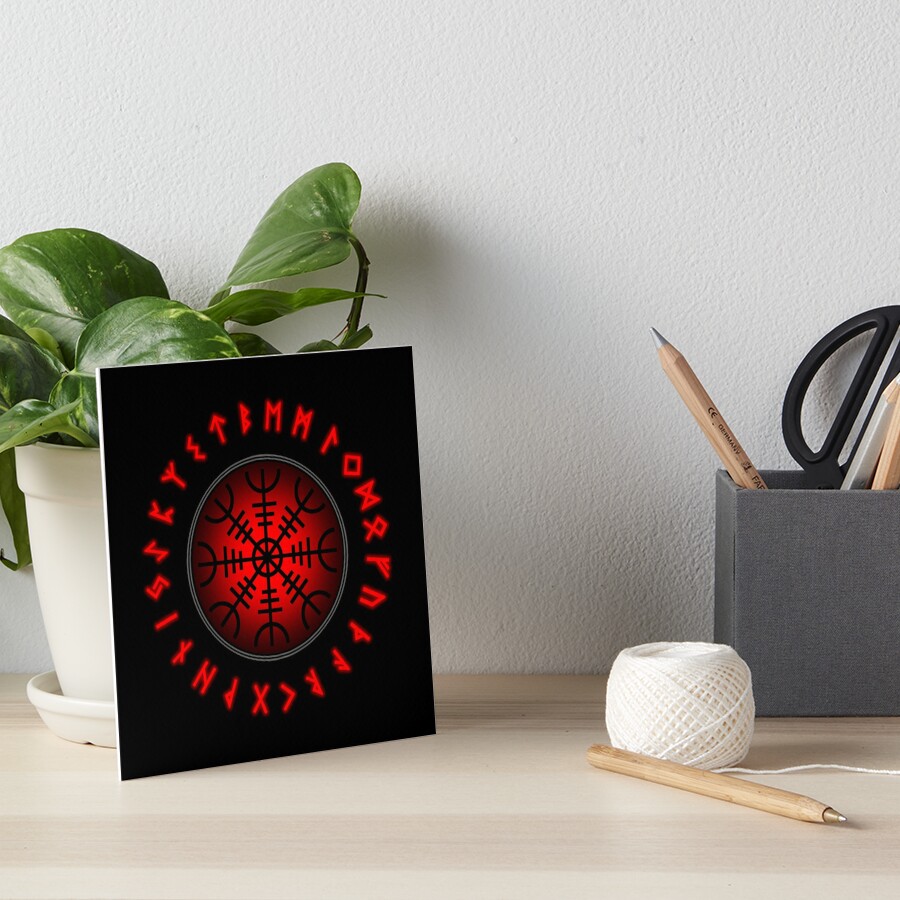
Aegishjalmur Helm Awe Helm Terror Icelandic Magical Staves Isolated White Stock Vector by
The helm of awe is essentially meant to incite respect, which may be the result of awe or terror. The Norse symbol Aegishjalmur goes by several names. Aside from Aegishjalmur and the Helm of Awe, it is also sometimes referred to as the Viking Compass, making it somewhat related to the Icelandic symbol Vegvisir.

Aegishjalmur, Helm of Awe, or Helm of terror Is an ancient protective talisman of the Norse
The Helm of Awe sounds remarkable and powerful, but it's also known by a range of other names such as the Helm of Terror, Aegishjalmur, and the Viking Compas.

Helm of awe/ helm of terror wooden decoration Etsy
Awesome & High Quality Here On Temu. New Users Enjoy Free Shipping & Free Return. Come and check at a surprisingly low price, you'd never want to miss it.

Helm Of Awe, Helm Of Terror, Icelandic Magical Staves, Aegishjalmur, With Iceland Flag Cartoon
Yggdrasil Aegishjalmur/Aegishjalmr, The Helm of Awe and Terror - Viking Symbols Vegvisir, The Viking Compass/The Runic Compass, The Viking Symbol of Guidance The Triple Horn of Odin - The Horn Triskelion Mjölnir, The Hammer of Thor, The Viking Symbol of Strength And Protection The Swastika Svefnthorn

Helm of Terror Awe Viking Ragnarok Hoodie PAGAN REBELS
Aegishjalmur, also known as the Helm of Awe or Helm of Terror, is a powerful Icelandic magical stave that has been used for centuries. It is characterized by its unique design, consisting of an octagonal shape with eight radiating arms or tridents. The Helm's "arms" resemble Z-runes, often referred to as "Algiz" in modern times. Given.

Aegishjalmur Helm of Awe Helm of Terror Stave Rune Old
December 7, 2022 Aegishjalmur is an ancient symbol that does not have a definite translation. It means protection and serenity, among other things so you know it's gonna come in handy. You're probably wondering, "What is aegishjalmur"? Why is it called the "Helm of Awe"? And what does that mean? Well, it means you need to read this article.

Helm of Awe, Helm of Terror, Icelandic Magical Staves with Scandinavian Pattern, Aegishjalmur
The name of the Norse runic symbol that makes up the Helm of Awe is rumored to have derived from the magical giant Aegis, who ruled over the sea. Aegis was not a kind giant. Instead, he was jealous and angry, smashing into ships and pillaging all the treasure for himself. However, there is no proof regarding his connection to the symbol.

ÆGISHJÁLMUR 3. (Helm of Awe or Helm of Terror. To induce fear, protect the warrior, and prevail
It signifies a barrier or shield against potential threats. Awe and Terror: The 'Aegis' component, while translating to 'shield', carries connotations of both awe and terror in its protective capacity. In Old Norse contexts, shields were not just passive protective items but were also symbols of a warrior's might and presence on the battlefield.

ÆGISHJÁLMUR 5 (Helm of Awe or Helm of Terror. To induce fear, protect the warrior, and prevail
Viking Answer Lady Webpage - Ægishjálmr: the symbol called the Helm of Awe Learn more about the Viking Ægishjálmr symbol and the beliefs associated with the sign.

Helm of Awe Permanent Vinyl Decal Aegishjalmr Runes Helm of Terror Sticker Decal in
The word 'helm' means 'at the forefront' or refers to an elevated position that oversees all. Thus, the Aegishjalmr really referred to a symbol that was marked on the forehead and between the eyes of the Viking warrior before battle.

The Helm of Awe and TerrorMagHoATcolor
The Helm of Awe or The Helm of Terror (Old Norse: Ægishjálmr) is probably one of the most recognized Icelandic symbols, and according to Norse lore, anyone who wears this symbol in battle will be protected from harm. In this article, we will explore the origin of the Helm of Awe, I will dig into mythological and academic sources.

"ÆGISHJÁLMUR 3. (Helm of Awe or Helm of Terror. To induce fear, protect the warrior, and prevail
In this video, we investigate the Ægishjálmur symbol, also known as the Helm of Awe or Helm of Terror. We discuss the origins of this Icelandic stave through.

Helm of awe helm of terror icelandic magical Vector Image
The Helm of Awe ( Old Norse Ægishjálmr, pronounced "EYE-gis-hiowlm-er") is one of the most mysterious and powerful symbols in Norse mythology.

Helm Awe Helm Terror Vector & Photo (Free Trial) Bigstock
The Helm of Awe or Helm of Terror is symbolic of a "vague artifact" described in the ancient pages of Norse mythology that also functioned as a form of magic, spell, or incantation. (Dbh2ppa / Public domain) The Helm of Awe: Physical Object or Spell? One of the earliest references to the Helm of Awe seems to refer to it as a physical object.

Helm of Awe Terror Aegishjalmur Vinyl Decal V4 Norse Pagan Rune Die Cut Sticker
The Helm of Awe or Helm of Terror is an object in Norse mythology relating to the hoard protected by the worm Fáfnir and subsequently the name of a modern Icelandic.

Helm Of Awe Offering Bowl Hexagon Aegishjalmur Helm Of Terror Etsy
How do you Pronounce Vegvisir? The vegvisir pronunciation is 'Vegg vee seer.' Phonetically, you pronounce the first third with a hard 'g,' like 'egg' and not 'edge.' Then, pronounce the second third like 'bee,' but with a 'v.' Finally, pronounce the last third 'seer' like 'beer.' Is Vegvisir Actually Viking?